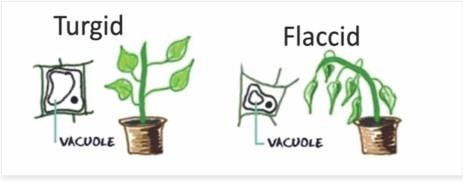By Cynthia Kerson
With the weather getting warmer by the year, it's time we recognize the difference between heat and water stresses in our plants. The temperature is averaging 83°, and according to www.GreenCastOnline.com, a service provided by a fertilizer company, soil temperatures have been averaging about 81° in Napa and 85° in Calistoga. Lately, these temperatures have been as high as 84° and 88°, respectively. This company wants to sell you lawn fertilizers, so their warning system is in place to alert when certain weeds or insects might appear because the soil of your lawn reaches the temperature they thrive in.

Most of the plants we grow in our gardens like the soil temperature to be between 65-75°. When the soil gets too hot, they mitigate the effect by wilting, bolting, getting sunburn and dropping leaves. What is the most common, knee-jerk, reaction to this? Water, water, water. However, hot soil and air temperatures don't always correlate with not enough water. In fact, too much water in the soil could contribute to the problem by suffocating the roots, so it's important to recognize the signs of heat stress and manage that. The first line of action is to mulch. I'm sure you've heard a Master Gardener or two assert the importance of mulching. Mulched soil (bark, hay, rocks [sometimes], and leaving leaves), are all forms of mulch. Unmulched soil generally follows the fluctuations of the air temperature and this is especially true in raised beds. Mulched soil tends to stay consistent throughout the daily cycle.
Another way to cool the soil, and hence the plant, is to provide shade cloth, which can cool the air by as much as 10°. In this case, since you are cooling, and not trying to protect from frost, leave the sides open so air can circulate but is cooler due to shade protection of the sun. This will also keep the humidity level constant.
How are heat and water stress different? The most common sign for both too much and not enough water is yellowing of leaves. Mottled leaves can also be a sign of either. The gardener needs to look beyond these symptoms to decide which it is. Overwatering may be expressed by droopy, floppy leaves that will become lighter green than the natural color of the plant's leaves, whereas under-watered plants wilt from the stem and may lose leaves.
When overwatered, the droopy stems occur because the plant loses turgidity. Turgidity is the pressure against the plant's cell walls from the amount of water within them, causing them to be erect, like a water balloon. Without enough water to support the shape of the cell, they'll flatten, or become flaccid, and when enough cells have lost shape, the stems wilt. This is the most obvious sign to determine whether the plant is under- as opposed to over-watered.
An overwatered plant may also shed leaves – but for a different reason: this is because the roots may be experiencing rot due to limited access to oxygen and nutrients in the soil. If you see this, obviously don't water more. Removing the plant and running the roots under water to clean them, removing severely damaged roots, and repotting or replanting is your best, albeit not guaranteed, way to resolve root rot.
A sign of an under-watered plant is leaf drop. Before they drop, though, their tips may brown, and they'll look dull and lack-luster. The plant will put more energy into survival and less into leaf and blossom development. If chronically under-watered, the leaves won't grow back. If intermittent, the leaves will cycle through starting and dying off. Obviously, the resolution is giving the plant water, but in doses. Don't flood the plant out of guilt. Water until you feel wet soil at about 2” depth and remain on whatever schedule works to maintain that level. Removing any blooms or imminent blooms will help the plant put its resources into preparation.
Knowing whether a plant is thirsty, drowning, or experiencing heat stroke is vital to its care. Recognize heat stress and resolve it by maintaining a healthy layer of mulch, covering with shade cloth, or possibly moving the plant to an area where the soil can remain cooler on hot days. If watering is the issue, respond with the appropriate measures discussed above. Hopefully your plant will come back and thrive.
Source : ucanr.edu